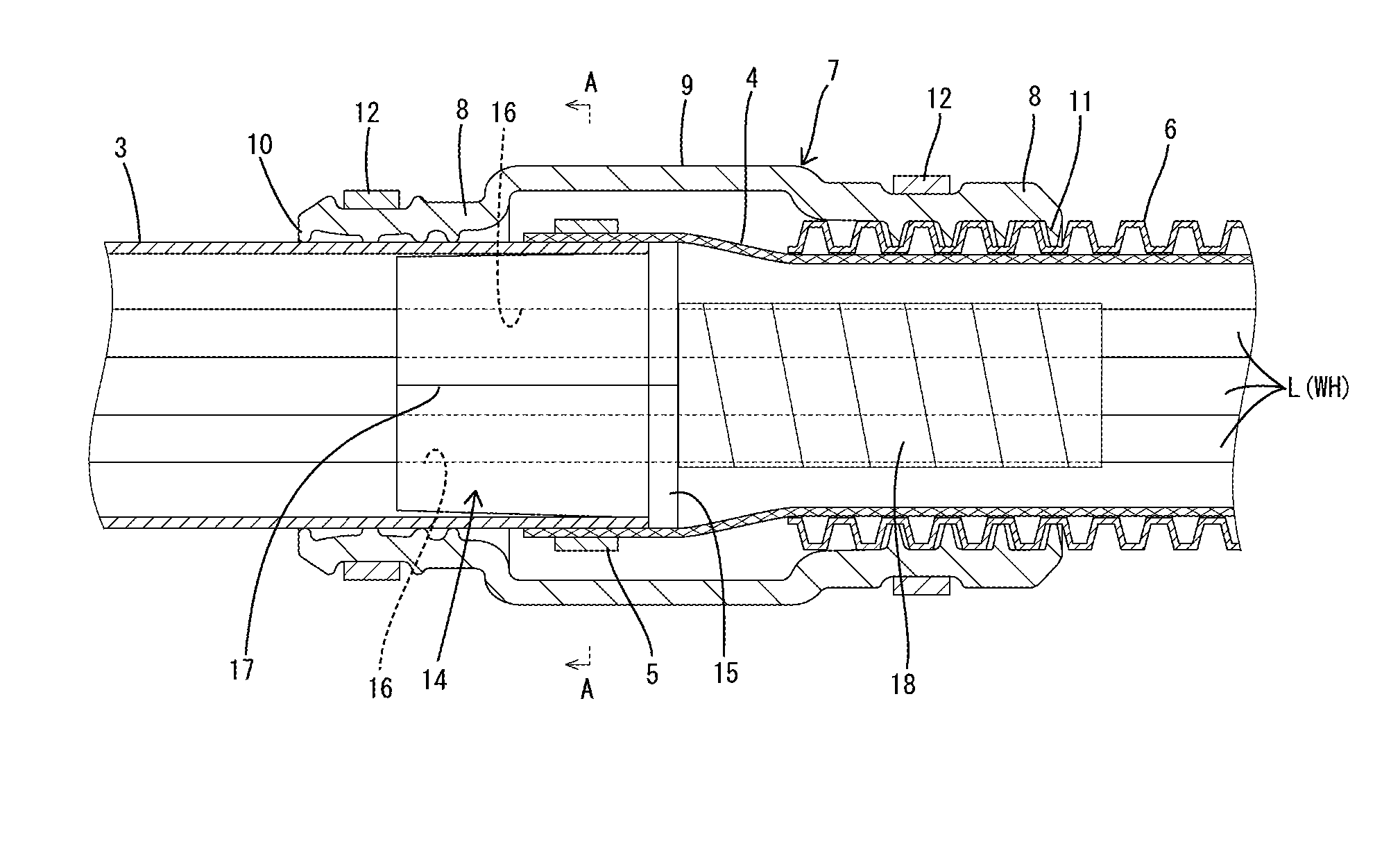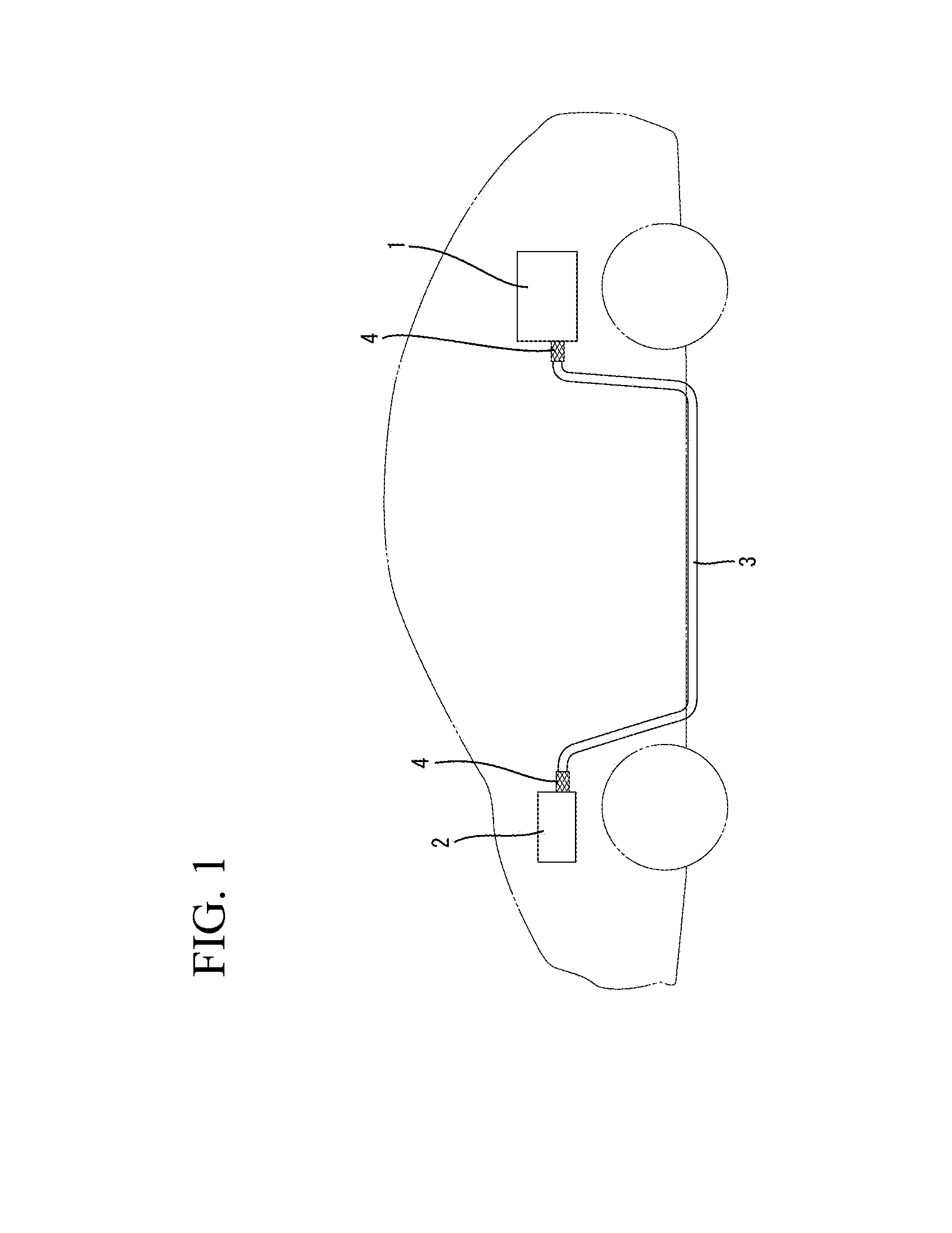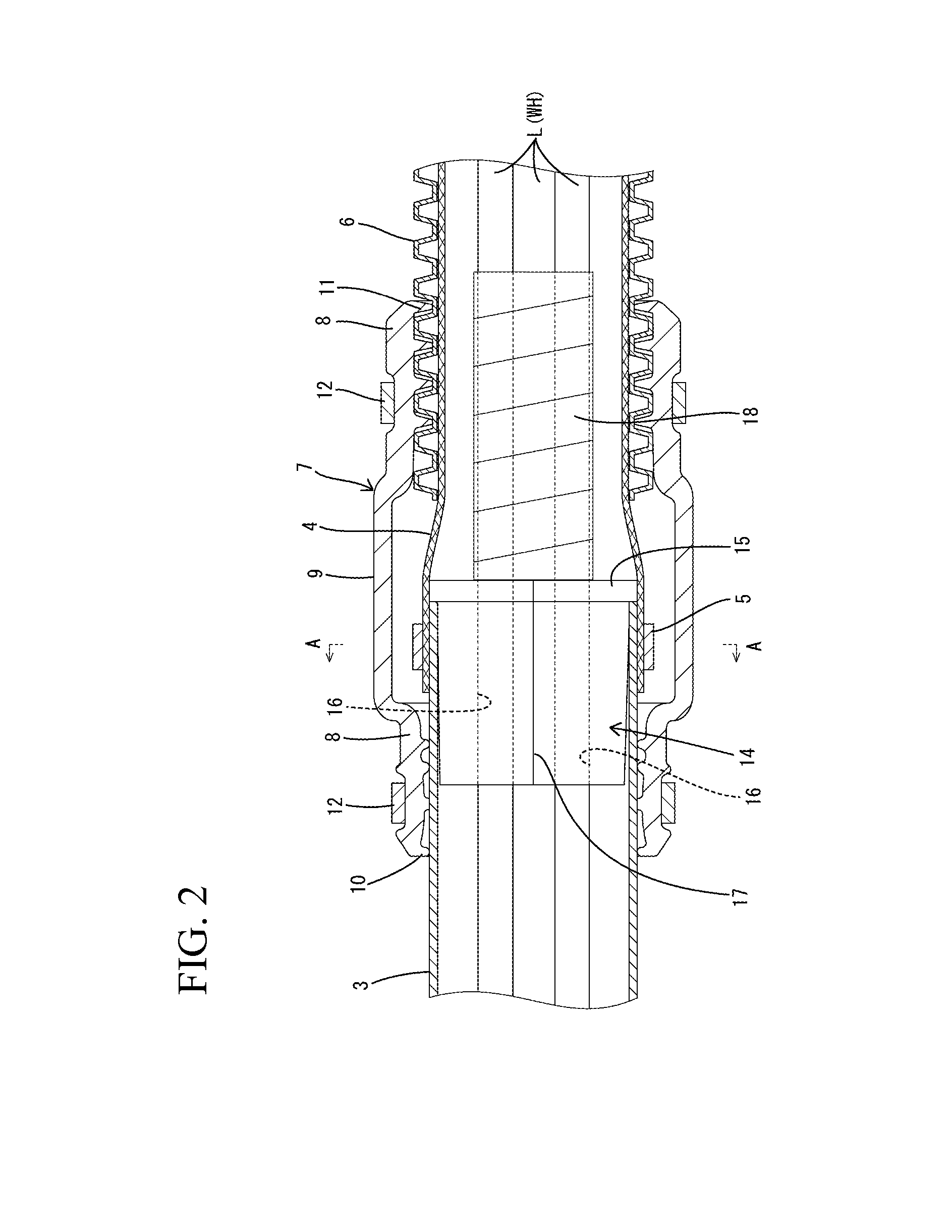Seal structure for wire harness
a technology of sealing structure and wire harness, which is applied in the direction of insulated conductors, cables, conductors, etc., can solve the problems of rust in the pipe, burden on the axial direction, and the inability to insert conductive wires constituting the wire, so as to achieve easy and smooth sealing and not compromise the effect of ability
- Summary
- Abstract
- Description
- Claims
- Application Information
AI Technical Summary
Benefits of technology
Problems solved by technology
Method used
Image
Examples
embodiment 1
[0022]A seal structure for a wire harness of Embodiment 1 is applied to a hybrid vehicle.
[0023]A wire harness WH connects a battery 1 that is installed on a rear side of the vehicle and an inverter 2 that is provided in an engine compartment to each other. In the case of the present embodiment, as shown in FIG. 2, the wire harness WH is constituted by three flexible conductive wires L.
[0024]An intermediate portion of the wire harness WH is collectively inserted in a shield pipe 3 that is disposed in an under-floor area of the vehicle. The shield pipe 3 is made of aluminum or an aluminum alloy and is composed of an elongated pipe having a circular cross-sectional shape. The shield pipe 3 is bent to be routed along a predetermined pipe arrangement route. The shield pipe 3 generally extends horizontally in a substantially front-rear direction of the vehicle. A front end side of the shield pipe 3 is bent upward to be introduced into the engine compartment, and a rear end side thereof is...
embodiment 2
[0040]FIG. 5 shows a seal member 14A according to Embodiment 2 of the present invention. In Embodiment 1, the wire insertion paths 17 of the seal members 14 are in the form of straight line-shaped cuts that are made along the axial direction, whereas wire insertion paths 17A of Embodiment 2 are in the form of wavy line-shaped cuts that are made along the axial direction to reach the corresponding wire insertion holes 16.
[0041]The thus formed seal members 14A allow the path length of the wire insertion paths 17A from an end surface on the leading end side to an end surface on the inward side, of each seal member 14A, to be increased and also allow the contact area between opposing surfaces of each wire insertion path 17A to be increased even more. Therefore, the entry of water to the inside of the shield pipe 3 can be more reliably prevented.
[0042]The other components are the same as those of Embodiment 1, and thus the same effects can be provided.
embodiment 3
[0043]FIG. 6 shows a seal member 14B according to Embodiment 3 of the present invention. In Embodiment 2, the wire insertion paths 17A in the form of wavy line-shaped cuts that are each composed of curved lines over the entire path in the axial direction are described. However, wire insertion paths 17B of Embodiment 3 are formed into the form of wavy line-shaped cuts that are each composed of straight lines over the entire path in the axial direction.
[0044]The thus configured Embodiment 3 also can provide the same effects as Embodiment 2.
PUM
 Login to View More
Login to View More Abstract
Description
Claims
Application Information
 Login to View More
Login to View More - R&D
- Intellectual Property
- Life Sciences
- Materials
- Tech Scout
- Unparalleled Data Quality
- Higher Quality Content
- 60% Fewer Hallucinations
Browse by: Latest US Patents, China's latest patents, Technical Efficacy Thesaurus, Application Domain, Technology Topic, Popular Technical Reports.
© 2025 PatSnap. All rights reserved.Legal|Privacy policy|Modern Slavery Act Transparency Statement|Sitemap|About US| Contact US: help@patsnap.com



